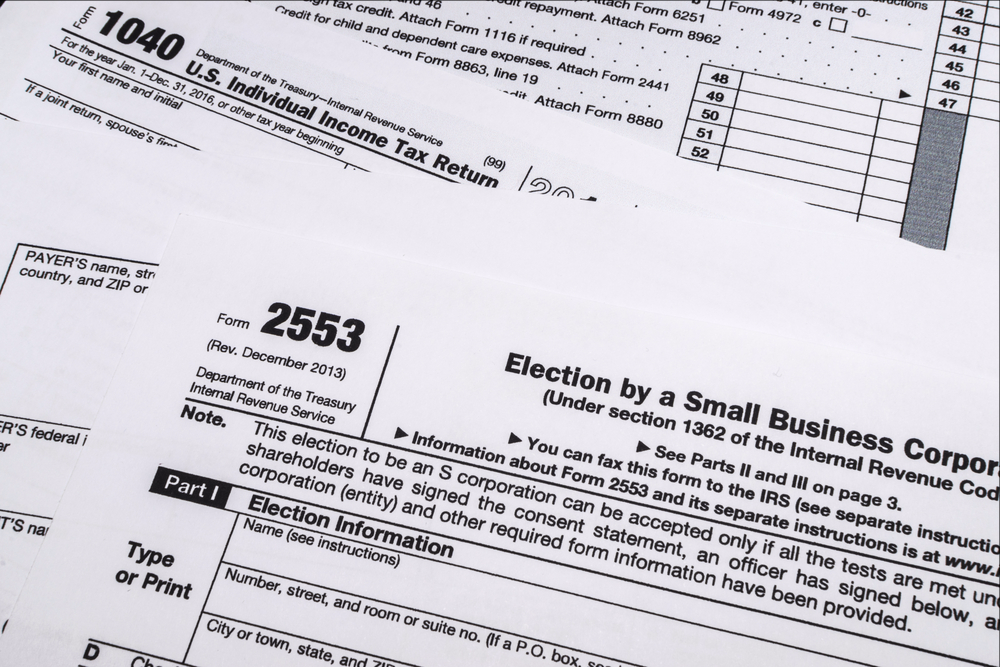How To Sell or Refinance A Home With an IRS Lien

When a homeowner wants to sell their home, but it is encumbered with an Federal tax lien (i.e. IRS Form 668(Y)), they might feel as if all hope is lost. But alas, it isn’t. In this post we’ll outline what to do if you are facing this situation and the exact steps to take.
The first thing to note is that if there is a federal tax lien on your home, you must satisfy the lien before you can sell or refinance it. Yet, there are a number of options to satisfy the tax lien. For some, if you have equity in your property, the tax lien can be paid (in part or in whole depending on the equity) out of the sales proceeds at the time of closing. For others, if the home is being sold for less than the lien amount, the taxpayer can request the IRS discharge the lien to allow for the completion of the sale. Additionally, taxpayers or lenders also can ask that a federal tax lien be made secondary to the lending institution’s lien to allow for the refinancing or restructuring of a mortgage. Let’s now look at what happens under each scenario.
Proceeds Satisfy The Debt – Get A Tax Lien Payoff
If the amount received from the sale will satisfy the amount of IRS debt owed, then one simply needs to obtain tax lien payoff amount.
An updated lien payoff or balance due amount may be requested from the IRS Collections Advisory Group. This unit will issue a payoff letter to taxpayers or to third parties such as taxpayer representatives, lenders, and escrow or title companies. The letter will indicate the current amount that must be paid before the IRS releases the lien.
Third parties must submit their request in writing accompanied by a properly completed Form 8821, Tax Information Authorization, signed by the taxpayer. Without a Form 8821, the IRS cannot disclose
taxpayer information to third parties. The Form 8821 must address each tax period on the notice of lien and be received by the IRS within 60 days after the taxpayer signs and dates it.
Payoff requests can be made by phone (1-800-913-6050), fax (1-855-753-8177) or by mail sent to:
Internal Revenue Service
Centralized Lien Operation
P.O. Box 145595, Stop 8420G
Cincinnati, OH 45250-5595
Payoff computations may take up to 14 calendar days to process. Two copies of all payoff letters are mailed to the requester. One copy of the payoff letter must be returned with the payment to ensure proper application and timely release of the lien. To ensure expedited processing the payment must be sent to the address identified on the payoff letter. Payments should be made payable to the United States Treasury.
Proceeds Don’t Satisfy The Debt – Obtain Lien Subordination or Discharge
What is a discharge or subordination and how can it help you sell or refinance your property? A discharge removes an entire asset (collateral) from being covered by the tax lien so that it may transfer to the new owner free of the lien. To apply for a Lien Discharge, one completes IRS Form 14135. A subordination is used to put the IRS’ position in 2nd priority. It is used to “unlock” an asset so that another creditor can be paid before the tax lien is paid (e.g. bank loan refinancing). To apply for a Lien Subordination, one completes IRS Form 14134.
Now let’s look at the specific steps on how to complete each application. To help you with the application process, you might want to review IRS Publication 783 or IRS Publication 784, which contain instructions on filling out the forms, have the application forms themselves, along with FAQ’s.
The first item of note is that the application for discharge or subordination is handled on a first come, first served basis. As such, one needs to get either application to the IRS at least 45 days before the sale or loan settlement meeting. If the Notice of Federal Tax Lien is discovered late, or the application isn’t submitted in time, the sale or loan could be delayed. If you’re trying to avoid foreclosure, be sure to indicate this on your application and the IRS will do its best to expedite your request.
- Sections 1, 2, and 3 of either the discharge Form 14135 or the subordination Form 14134 are self-explanatory.
- If you are using a representative, fill in Section 4, and be sure to indicate who is being represented. While having a representative is not required, if you hired someone to represent and speak on your behalf, attach IRS Form 2848. Both of you must sign this form. If you want the IRS to share your information with someone else, you would attach IRS Form 8821. If you are attaching one or both of these forms, check the “yes” box in Section 4.
- In Section 5, you would fill in the contact information for your finance company.
- The information in Section 6 will vary depending on the type of transaction. If you are selling, use Form 14135 and enter the sales price. If you are refinancing or getting a loan, use Form 14134 and enter both your existing and new loan amounts.
- Section 7 asks for your basis for discharge or subordination. Basically, you need to check the box that best addresses what you would like the IRS to consider as the reason why they should approve your application.
- Section 8 for either application form asks for a description of your property, which could be either real estate or personal property such as art work, a boat, a plane, or your business receivables. Don’t forget to provide the property address.
- For Section 9 of Form 14135, when you are selling property, the IRS requires a professional appraisal, which is generally part of the closing package and a second type of value estimate. Form 14134 Section 9 does not call for a professional appraisal for your refinance or loan. Check the box for the type of value estimate you are including.
- Sections 10 through 14 are a checklist of the attachments which you must include with either the discharge or subordination application form.
- These next two sections only pertain to Discharge Form 14135.
- If your property will be sold in an escrow sale, with creditors paid from the escrow, the IRS needs your draft escrow agreement with your Form 14135. Be sure to check the “attached” box in Section 15.
- Section 16 of Form 14135 is if you bought property with a lien attached where you are not the taxpayer and you checked 6325(b)(2)(A) or (B) as your basis for discharge in Section 7.
- The final section on both forms is the Declaration. Here is where you must sign and date your application under penalties of perjury.
At this point, your form should be complete. Attach all your supporting paperwork and send your application package to one of the IRS Advisory Offices. The correct mailing address of the IRS Advisory Office will be found in IRS Publication 4235. It will be the one for the state that the Notice of Federal Tax Lien was filed in.
The IRS Advisory approves or denies your request based on your application and comparison with federal and state property rules. If the IRS approves your application, they will send you your discharge or subordination certificate, based on what box you checked, or best applies to you in Section 7. If, however, the IRS denies your request, or you disagree with the IRS valuation in a commitment letter, you can request an appeal through the Advisory office using IRS Form 9423, Collection Appeal Request. IRS Publication 1660, Collection Appeal Rights, explains your appeal rights.
Need Help Removing A Tax Lien So A Property Can Sell?
We know that having a notice of federal tax lien a property raises many complex financial issues. Our in-depth coverage of the subordination and discharge application forms was designed to give you insight into what is needed to be able to successfully navigate through the application process. However, as this article should not be construed as advice, one is advised to check IRS publications, talk to the IRS Collections Advisory Group or contact a tax advisor for more details.
Don’t feel like doing any of the above? We don’t blame you! So, if you are trying to sell your home, are a real estate agent or title company that just found out that a deal has a tax lien on it, or are concerned with a deal closing on time, contact us NOW.
We can work with the IRS (so you don’t have to) so that the deal can close. Nothing feels better then a homeowner selling their home and getting the IRS debt monkey off their back or a real estate agent getting a commission check from a deal that was in jeopardy!
The Real Estate Brokers Little Black Tax Book

As a broker, your primary job is marketing. Marketing yourself, your services, your client’s properties… you get the idea. Once the marketing is done, you then move on to the sales side of the house. You know, getting the clients to fall in love with the property, dealing with objections, bringing them back to reality, and ultimately getting the parties to sign a contact. Once those two things happen, you then move on to the technical part of your job. That is, the actual part of dealing with the real estate transaction itself and wrangling all the other parties that become involved.
Yet what was not obvious in the three roles mentioned above is this: you are also actually running a business. Furthermore, running a business is not what your pre-licensing class trained you to do. Still further, you were not trained on taxes and how they impact your business or your client’s scenario. To that end, it is your accountant’s job to help you understand and navigate these items. So, if you are going to select a partner to help you in this area, would it not make sense to find one who is experienced? Given the above, that is where this book and I enter the picture!
My goal for writing this book is three-fold. First, I want to help you understand how taxes impact you both from the standpoint of being a business owner as well as from the perspective of reducing them. It is important for all taxpayers to understand their responsibilities, the associated rules, and what can be done within those rules to legally reduce their tax liability. Second, like CPAs and other tax professionals, brokers are advisors to their clients. The better equipped you are to help your client as it relates to certain tax aspects of their transaction, the more efficiently you can address problems and close deals. Besides who does not like to close more deals? No broker that I am aware of!
Finally, tax problems are commonplace with those who earn money where no income tax withholding occurs. Think of anyone who is paid via cash (or check) or as an independent contractor (i.e. self-employed): dentists, brokers, attorneys, truck drivers, construction contractors, etc. I have known a fair number of brokers who have tax problems. As a CPA authorized to represent taxpayers before the Internal Revenue Service (IRS), I help them solve those issues. Not only do I assist them in resolving their issues, but also those of their clients so that deals can close. The key thing to know is that no matter how bad it initially seems, I have never been unable to help a client solve their tax debt matter.
Check out the video below to hear more and look below the video on ways that you can place an order.
You can also view this video on our YouTube Channel here.
How To Order Your Copy
Order directly from our office. You can order via credit card by clicking the “Buy Now” button below. If you select the “autographed with my custom message” option, you will be contacted post order to obtain your message. Please note that payment processing is performed via PayPal and if you do not have an account, you can simply select the option to pay with credit or debit card at the bottom. All orders processed via this method include Illinois sales tax as well as priority shipping via USPS.
Don’t have a credit card or simply want to pay via check? Then please complete this TREBLBTB Order Form and return it to our office.
Order via Amazon. If you do not want an autographed copy, or do not want to order via our office, you can order your copy via Amazon. Simply visit the author page for Jared R. Rogers, CPA and complete your order that way. You will have the choice of ordering either the paperback or Kindle edition.
Electing S-Corp Status and Late Filing Relief

Every tax season we encounter some common issues and errors surrounding business owners who desire to be taxed as a S Corporation (S-Corp) by the IRS. What might those issues be? Well, usually one of the following:
- Failing to make the S-Corp election entirely because they didn’t realize that Form 2553 needed to be filed with the IRS
- Failing to make the election in a timely manner
In one of our previous posts we discuss the qualifications to become a S-Corp and some of the tax considerations. In this post, we are strictly going to discuss how to make the election and what to do if the deadline is missed.
When to Submit Form 2553
Form 2553 is used to tell the IRS that you want a corporation (or entity eligible to be taxed as a corporation, such as a single member LLC) to be taxed as a S-Corp. It is due:
- No more than 2 months and 15 days after the beginning of the tax year the election is to take effect,
- or at any time during the tax year preceding the tax year it is to take effect.
You can file the election at any time after thee above deadlines if your corporation meets the criteria for making a late S-Corp election (which we will discuss next).
It is important to note that the S-Corp election is made with the IRS, not the state. One is NOT changing their entity structure with the state. They are merely asking the IRS to tax the entity in a certain fashion. To help clarify what the election deadlines look like in practice, we’ve provided the following example:
Example 1 – New Corporation. New Corp, operates on a calendar year. It incorporated and began its first tax year on January 7th 2019. The 2-month period ends March 6th and 15 days after that is March 21st. To be a S-Corp beginning with its first tax year, it must file Form 2553 during the period that begins January 7th 2019 and ends March 21st 2019 (i.e. 2 months and 15 days after it incorporated). Because the corporation didn’t exist prior to January 7th, an election requesting an effective date prior to January 7th 2019 won’t be granted by the IRS.
Example 2 – New Corporation With Short Tax Year (less than 2 1/2 months). Short Corp, operates on a calendar year. It incorporated and began its first tax year on November 8th 2019. The 2-month period ends January 7th 2020 and 15 days after that is January 22nd 2020. To be an S corporation beginning with its short tax year, the corporation must file Form 2553 during the period that begins November 8th 2019 and ends January 22nd 2020. Because the corporation didn’t exist prior to November 8th, an election requesting an effective date prior to November 8th 2019 won’t be granted by the IRS.
Example 3 – Established Business. Old Corp, operates on a calendar year. It has been filing Form 1120 as a C corporation but wishes to make the S-Corp election for its next tax year (e.g. 2020) beginning January 1st. The 2-month period ends February 28th (the 29th in leap years) and 15 days after that is March 15th. To be a S-Corp in 2020, the corporation must file Form 2553 during the period that begins the first day (January 1st) of its last year as a C corporation (i.e. 2019) and ends March 15th of the year it wishes to be an S corporation (i.e. 2020). Because the corporation had a prior tax year, it can make the election at any time during 2019 but NO LATER than 2 months and 15 days beyond January 1st 2020 (i.e. the tax year the election is to be effective).
For the specific steps on when, where and how to submit your S-Corp election request, please refer to the Form 2553 Instructions per the IRS.
Requesting Relief for A Late S-Corp Status Election
So what happens if the deadline has passed to make the S-Corp election or you didn’t even know there was a deadline? Lucky for you, the IRS realizes that people makes mistakes and offers you some options to correct the oversight. They basically fall into the categories of:
- Simply make the election effective for the NEXT year
- Request relief stating that there was “reasonable cause”
- Request relief using an IRS Revenue Procedure
Make the election effective next year. For those who miss the deadline, but don’t need it to be effective immediately, they can simply request that if be effective for the next year. For example, if you incorporate in late December 2019, but miss the March 15th 2020 deadline, you can always request that the election be effective for Tax Year 2021 by submitting Form 2553 prior to January 1st 2021.
Request relief on the grounds of reasonable cause. Reasonable cause refers to when a taxpayer didn’t file the forms on time due to a “valid reason” so to speak. In most cases, we’ve found the IRS to be fairly lenient when it comes to granting relief and allowing a corporation to elect S-Corp status in the year intended. Please note that reasonable causes may vary, and the IRS does not publish a list of what it considers to be one that is valid. However, there are numerous court cases that show that certain reasonable causes are “nearly always” allowed. Two of these typically include:
- The company’s president, chief executive officer or similar responsible person neglected to file the election, or your corporation’s tax professional or accountant neglected to do so.
- The corporation or its shareholders either did not know of the need to file an election or didn’t know they needed to file the election by a certain date.
If you are going to request relief on the grounds of reasonable cause, make sure that you address the following points within your statement:
- What happened that caused the filing to be late and when did it happen?
- How did these facts and circumstances result in the forms not being filed on time?
- How did the company handle its financial and tax affairs during this time? Meaning, did they operate as if they were a S-Corp or did they delay individual income tax filings because they were intending to be a S-Corp?
- What attempt did the company make to correct the situation when they learned they did not make the election correctly?
Request relief using an IRS Revenue Procedure. Rev. Proc. 2013-30 (PDF) facilitates the grant of relief to those who make a late S-Corp election. This procedure provides guidance for relief for late:
- S corporation elections,
- Electing Small Business Trust (ESBT) elections,
- Qualified Subchapter S Trust (QSST) elections,
- Qualified Subchapter S Subsidiary (QSub) elections, and
- Corporate classification elections which the entity intended to take effect on the same date that the S corporation election would take effect.
Generally, the relief under the revenue procedure can be granted when the following requirements are met:
- The entity intended to be classified as an S corporation, is an eligible entity, and failed to qualify as an S corporation solely because the election was not timely;
- The entity has reasonable cause for its failure to make the election timely;
- The entity and all shareholders reported their income consistent with an S corporation election in effect for the year the election should have been made and all subsequent years; and
- Less than 3 years and 75 days have passed since the effective date of the election.
To assist in determining if an entity qualifies for late election relief, Rev. Proc. 2013-30 includes flow charts, as well as specific guidance for each of the five categories listed above.
If an entity does not qualify for relief under Rev. Proc. 2013-30, the entity may request relief by requesting a private letter ruling. The procedural requirements for requesting a letter ruling and the associated fees are described in Rev. Proc. 2019-1 (PDF). For more information on late election relief, check out this page on the IRS’ website.
Need help correcting a late S-Corp election? We’ve helped many companies that thought they filed their election or didn’t know they needed to file by a certain deadline obtain their desired S-Corp status. If you find yourself in this unfortunate predicament, you’re best advised to seek a professional who knows how to address the situation.
To that end, give us a call at 773-239-8850 or shoot us an email via the address contained in the footer of this page. The sooner you put us to work for you, the sooner you can have your election granted to you by the IRS!
What is the IRS Fresh Start Initiative?

If you you have tax debt, you have undoubtedly heard a lot about the Fresh Start Initiative (FSI) in radio ads, TV advertisements, online and more. Many of these advertisements will make you think that the IRS has some “special program” or that it is some recent change the IRS made. Both of these facts could be further from the truth.
You see, many tax experts and consumer advocates had accused the IRS of failing to assist those who had significant tax debt, but were trying to pay it off. So in 2011 (yes, 8 years ago at the time of this writing), the IRS announced the creation of a new initiative known as the FSI. This was in response to the critics, law makers and the fact that people were still being impacted by the recession.
The primary objective of the FSI was to give taxpayers who owed substantial back taxes the opportunity to consolidate their tax bills and pay them off in a convenient and orderly fashion. The key thing to take away is that the IRS made it easier for one to pay their debt. Contrary to what the advertisements say, the FSI was not:
- A program to forgive a persons tax debt
- Some magical bullet to simply give the IRS a fraction of the tax debt or “pennies on the dollar” and call it good
- A program at all
What Changes Did the IRS Make with the FSI?
The primary provisions of the program included the following:
Tax Lien Changes. The FSI increased the tax debt threshold at which the IRS will file a Notice of Federal Tax Lien (Letter 3172). The threshold amount increased from $5,000 to $10,000. This was a good thing because having a tax lien on your credit report can hinder several things (e.g. ability to get credit, a job, etc). But do keep in mind that the IRS (at its discretion) can still file a tax lien on someone if they have a debt that is below $10,000.
The IRS also made changes regarding the withdrawal of tax liens, which eliminates the Notice of a Tax Lien publicly. Specifically, it made it so a lien could be withdrawn via these situations:
- The tax debt was paid off in full or the statute of limitations (CSED) was reached. Although IRS liens are generally self-releasing, they don’t always come off. Therefore, a taxpayer could now call the IRS and tell them to release the lien because they met either of the two qualifications.
- If you have entered into OR converted your regular installment agreement to a Direct Debit installment agreement, the tax lien can be withdrawn if:
- You are a qualifying taxpayer (i.e. individuals, businesses with income tax liability only, and out of business entities with any type of tax debt)
- You owe $25,000 or less (If you owe more than $25,000, you may pay down the balance to $25,000 prior to requesting withdrawal of the Notice of Federal Tax Lien)
- Your Direct Debit Installment Agreement must full pay the amount you owe within 60 months or before the Collection Statute expires, whichever is earlier
- You are in full compliance with other filing and payment requirements
- You have made three consecutive direct debit payments
- You can’t have defaulted on your current, or any previous, Direct Debit Installment agreement.
Installment Agreement Changes. The FSI increased the threshold for which an individual can qualify for a Streamlined Installment Agreement from $25,000 to $50,000. It also expanded the tax debt amount threshold for small businesses to qualify for a Direct Debit Installment Agreement (DDIA) from $10,000 to $25,000. Furthermore, small businesses can pay down balances above $25,000 in order to qualify for a DDIA. The reason these increases are important is because they:
- Require minimal, if any, financial disclosure to the IRS;
- Don’t require an IRS manager to approve the payment terms;
- Don’t require taxpayers to liquidate assets to pay the IRS; and,
- Can be set up in one phone call or interaction with the IRS.
Offer in Compromise Changes. If a person qualifies, the OIC program allows a person to settle their debt for a “reduced” amount. The FSI made changes regarding the financial analysis component used to determine which taxpayers qualify for an OIC (or not). Specifically it made the following changes:
- Lump Sum OIC Payment – The IRS now looks at only one year of future income versus four years (i.e. 12 vs 48 months).
- Short-Term OIC Periodic Payment – The IRS now looks at two years of future income versus five years (i.e. 24 vs 60 months).
Currently Not Collectible Changes. When a taxpayer is in this IRS status, enforcement actions cease. To get into CNC, generally the taxpayer will need to provide sufficient documentation to justify this status with the IRS. The FSI made the process easier for individuals who owe $10,000 or less to qualify for a CNC by easing the documentation requirements.
Are YOU looking for a fresh start regarding your tax debt?
Look, we know that most with tax debt would love nothing more than for someone to waive a magic wand and make their debt disappear. While we can’t offer that, we can help you make your problem disappear if you engage us! For example, did you know that the IRS only has 10 years to collect on your tax debt? After that, it will vanish!
So take a look at the post above where we offer a flat fee product where we will calculate your CSED. Or, you can visit this page and learn more about our IRS Debt Representation services. In either case, we encourage you to act NOW so that your fresh start can begin as soon as tomorrow!
Solve Your Tax Trouble on National Get Out of The Doghouse Day

If you have “tax problems” then there is no better day to start dealing with them than National Get Out of The Doghouse Day! No, this is not some dreamed up holiday to sell greeting cards and it is actually real. Don’t believe us? Then check out this post over at the National Day calendar and you’ll see that it’s on the third Monday of July. So if you’re not sure how to get out of the dog house with the IRS or the state tax authorities, then here are 5 things you can do:
Open your mail.
When clients come to us to tackle their back taxes, many will often have several if not a dozen (or two) unopened letters. These may be from the Internal Revenue Service (IRS) of their state department of revenue. While many feel that not opening the letters keeps the problem at bay, it can actually make things worse. Did you know that many times when the IRS is attempting to assess a tax to someone, that they have to give them a chance to disagree? But there often comes a time where they give you a window, say 90 days, before what they propose becomes reality. If you fail to respond, you can get stuck with something that isn’t actually reality.
So the single best thing you can do to solve your tax problem is open your mail AND read it. What the letter says is actually not as bad as you think. Plus, there is no way that opening your mail is going to make the situation worse!
Address any unfiled tax returns.
One of the biggest tax cases that we worked on involved a taxpayer who had not filed since 1999. It was 2014 when we were getting involved with their matter. That’s 15 years of unfiled taxes! But don’t worry, according to the IRS Data Book SOI Tax Stats, there were over 13.1 million taxpayers with unfiled returns. So if you have unfiled returns, then know that you are not alone.
People fall behind on filing their tax returns for many reasons. Health issues, death of a loved one, fear, procrastination all have a place in keeping people from filing. But the one thing we see come up routinely is “I did’t file because I know I owe and I can’t pay it.” While this may be a true statement, it shouldn’t stop one from filing. Filing on time is best, but filing late is better than not filing. Similarly, not paying your taxes isn’t good, but paying late is better than not paying at all. There are penalties for not filling and not paying, but they are only calculated ONCE YOU FILE. And if you can’t pay what you owe? We’ll the IRS is always willing to set up a payment plan (installment agreement) with you to settle up.
If you have unfiled returns, you might want to talk to a tax advisor (see last point) prior to filing. While it may seem “correct” to file all of the unfiled tax returns, it may not be needed. While the IRS can “technically” ask for the last 10 years of unfiled returns, it often doesn’t. Furthermore, if you are owed a refund on any of those unfiled returns, the IRS will only issue it for the last 3 years. Anything older than that will be refortified due to the statute of limitations. As such, a tax advisor can help you determine what returns need to be filed to help you get back into the good graces of the IRS or the state.
Identify the root cause of your problem and face it head on.
We’ve all heard that insanity is doing the same thing over and over expecting to get a different result. Well, if you keep finding yourself in tax trouble, maybe you should figure out what is not working and change it. For example:
- Have more taxes withheld from your check by decreasing your withholdings on your W4
- Don’t claim “exempt” on your W4 unless you ARE actually exempt from paying income taxes (hint – most people aren’t exempt)
- Start paying estimated taxes if you are self employed or your income is reported to you on a Form 1099-MISC or Form 1099-K
- Withhold from your retirement income or social security if you are retired and constantly find yourself owing the government
- Make sure that you are claiming all the deductions and credits you are entitled to
- Review your filing status and make sure that you are using the one that is most advantageous to your situation (e.g. Head of Household if you are a single parent)
Reach out to the tax authorities.
Putting your head in the sand is not going to solve the issue. If you contact the IRS, they can tell you the current status of your account as well as what they want you to do to solve your tax matter. For example, they can tell you want years they want you to file and even give you copies of the tax records you need to file them if you’ve lost your records (it’s called a Wage & Income Transcript).
To reach out to the IRS, start with the last notice that you’ve received. It will have an address on the top left hand corner and a contact name and/or phone number in the top right hand corner. This will be the best contact to use because the folks at that number will understand what’s going on with your account as of now.
But if you’ve lost the notice or you have other issues, you can call the IRS at 1-800-829-1040, Monday – Friday, 7:00 a.m. – 7:00 p.m. your local time. If you’re calling about a business tax account, call 1-800-829-4933, Monday – Friday, 7:00 a.m. – 7:00 p.m. your local time. If you have a hearing impairment, call 1-800-829-4059 (TDD), Monday – Friday, 7:00 a.m. – 7:00 p.m. your local time.
Find a qualified tax advisor if needed.
Many people (approximately 40%) use software to prepare their tax returns. But if you get into tax trouble, a qualified tax advisor can be well worth their weight in gold. We don’t recommend that you shop for one based on price, but we do recommend that you find a person/firm that is open AFTER April 15th. Remember, the IRS doesn’t typically contact you during tax season and the notices associated with their matching program typically are sent between March and October following the year the return was due (e.g. 2019 for TY 2017 returns that were due in calendar year 2018).
To that end, you want to find someone who:
- understands tax (i.e. filing returns), tax debt issues and has experience resolving YOUR particular situation
- has the credentials to represent you before the IRS so you don’t have to ever speak to them (e.g. EA, CPA, JD)
- has a good personality fit with you as the two of you will have to work closely with one another
Need tax help?
We routinely help taxpayers get current and compliant and enter into resolution options with the IRS or state. Do you need help? Feel free to check out this page of our site then shoot us an email or give us a call. The sooner you do, the sooner you can but your tax nightmares behind you and get out of the doghouse!




